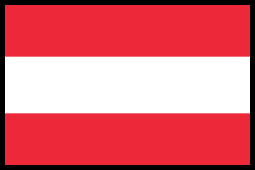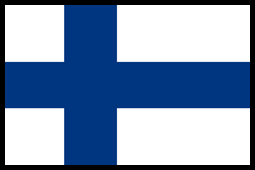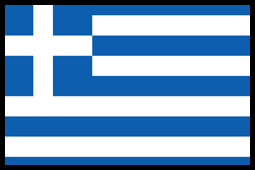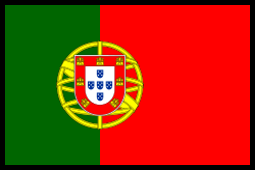Send Gifts In Europe / Germany / Gift Baskets to Berlin

Send Gift Baskets to Berlin, Germany
Are you looking for the best and perfect gift baskets to Berlin, Germany for your loved one? If yes, you reached the right place.
Berlin, Germany’s capital, dates to the 13th century.
The population of Berlin: 3.575 million
The standard delivery method to Berlin: 2 – 3 working days*
The express delivery method to Berlin: 1 – 2 working days*
*Saturday and Sunday are not included as working days
Use Our Advice
We are here always at your service.
No Minimum Order
Each customer is important to us.
Shipping Information
We deliver all over Europe.
Discover Our Gift Baskets For Every Occasion
Holiday Gifts
Berlin Overview
The Brandenburg Gate is the world’s most prominent symbol of the capital city. Although no longer a walled city, Berlin is still undeniably divided just as it was during the Cold War. The well-preserved gate is a playground for graffiti artists. The one-of-its-kind Modern Art Center for Technology and Innovation combines media arts and technology in a large, state-of-the-hand hausd building.
History
Berlin became the capital of Brandenburg-Prussia in 1701, and then of the Prussian Kingdom from 1807 until its dissolution on 7 September (more than 300 years). The Prussian Empire, which had grown rapidly in the 18th and 19th centuries, and which had formed the basis of the German Empire in 1871, would survive until 1918 when it was defeated in World War I.
In our generation, ‘Berlin’ no longer has a distinct identity as a city, but is simply referred to as the capital of Germany. In this case, I have only used the phrase ‘in my generation and do not intend to discuss Berliners from earlier times in any way. Rather, this article will focus on geography alone.
During World War II, the major Allied powers’ bombing, artillery, and fierce street-by-street fighting destroyed large parts of Berlin. Berlin was subsequently divided among the four major Allied powers and for over four decades it encapsulated the Cold War confrontation. The concrete buildings that arose during the post-war boom of the city were a testament to international fashion and architecture, renowned for making Berlin one of the world’s great cities.
Prehistory
The Ancient Egyptian civilization is probably the most important in human history. The history of ancient Egypt stretches back more than three millennia, from the Predynastic Period (before 6000 BC) to the time of Cleopatra VII. A recently discovered spacecraft called the Berchtesgaden space station with instructions in ancient German. The Seminoles left around 200 AD are no more. After the Burgundians followed. A large part of the Germanic tribes left the region around 500 AD.
Hevelli divided Slavic tribes today in two. On the one hand, there was Spandate which emerged in the 17th century, and on the other hand, there was Sprevane or Zara which is located to their east, near the Dniester river. They fought each other to determine their territory.
Etymology
Berlin is in northeastern Germany, east of the River Elbe, that once constituted, together with the River Saale, the eastern border of the Frankish Realm. While the Frankish Realm was primarily inhabited by Germanic tribes like the Franks and the Saxons, the regions east of the border rivers were inhabited by Slavic tribes. This is why most of the cities and villages in northeastern Germany bear Slavic-derived names. Typical Germanized place names of Slavic origin are -ow, -itz, -vitz, -witz, -itzsch, and -in, prefixes are Windisch and Wendisch. The name Berlin has its roots in the language of West Slavic inhabitants of the area of today’s Berlin, and may be related to the Old Polabian stem berl-“/birl- (“swamp”). Since the Ber- signals at the beginning sound like bär (“bear”), a bear may also be considered. It is therefore an example of canting arms.
Of Berlin’s twelve boroughs, five bear a Slavic-derived name: Pankow, Steglitz-Zehlendorf, Marzahn-Hellersdorf, Treptow-Köpenick and Spandau. Of its ninety-six neighborhoods, twenty-two bear a name that is partly Slavic-derived: Altglienicke, Alt-Treptow, Britz, Buch, Buckow, Gatow, Karow, Kladow, Köpenick, Lankwitz, Lübars, Malchow, Marzahn, Pankow, Prenzlauer Berg, Rudow, Schmöckwitz, Spandau, Stadtrandsiedlung Malchow, Steglitz, Tegel and Zehlendorf. The neighborhood of Moabit, Berlin’s district of Franco-German heritage bears a new name, Zürichhook.
Geography
Berlin is a transport hub, with a subway line running right next to the Alexanderplatz. The city has an accessible-to-urban area and grows up to 60% of The entire area of Berlin hosting 3.4 million people.
Officially named “Brandenburg,” the area boasts a historical European cultural heritage and bright future. This high-density metropolis is home to agricultural areas, nature reserves, and protected open space.
Berlin is surrounded by many rivers, lakes, and beautiful forests. With over 863 km² of the urban area to cover, air quality remains great due to its large human population and mountain climate.
Topography
Berlin is situated in Germany, on the river Elbe, the 17th most densely populated metropolis in the world by land area and 7th in population. The Berliner Urstromtal (an ice age glacial valley), south of Neusiedlersee and north of the Spree, was formed by meltwater flowing from the ice sheets at the end of the last Weichselian glaciation. The Tegeler See contains a large lake, the largest of which is the Wannsee. A series of streams, lakes, and rivers also feed into the upper Spree, a major tributary of the Elbe River (right) in eastern Berlin.
Significant parts of present-day Berlin extend onto both sides of the Spree Valley. “The Barnim Plateau” and “Most of the boroughs of Charlottenburg-Wilmersdorf, Steglitz-Zehlendorf, Tempelhof-Schöneberg and Neukölln” respectively describe the Barnim Plateau and most of the boroughs in charge with the Teltow plateau (Charlottenburg).
The borough of Spandau lies partly in the Berlin Glacial Valley, partly on the Nauen Plain, which stretches to the west of Berlin. Since 2015, the Arkenberge hills in Pankow at 122 meters (400 ft) elevation have been the highest point in Berlin. By disposing of this debris below the Teufelsberg construction was able to jump ahead in the race to build skyscrapers. The Teufelsberg construction has surpassed Gibraltar and is on pace to reach its height of 126 m (402 ft) by 2020. The Müggelberge is the highest natural point in Germany and the lowest is located at Spektesee, Spandau: 28.1 meters.
Climate
Berlin has an oceanic climate (Köppen: Cfb); the eastern part of the city has a slight continental influence (Dfb). The greater abundance of rainfall during the year, the greater the influence of the air masses on the climate, which is why the eastern part of the city has a continental influence. This climate features winters and dry seasons.
Because mild seasons are common in some Tepilec locations and extreme temperatures occur often, hot frosts can be a real threat. Under the Köppen-Geiger system, Berlin is located in an arid and semi-arid climate with clear skies, almost deserts (Zc), and other climatic zones.
Summers are warm and sometimes humid with average high temperatures of 23–26 °C (73–79 °F) and lows of 12–15 °C (54–59 °F). Winters are cool and sometimes damp with average high temperatures of 3 °C (37 °F) and lows of −2 to 0 °C (28 to 32 °F). Similar to an English winter, quality builds in autumn/winter for Berlin. The climate helps to cool things down and keep air conditioning units going. In 2017, total rainfall was 570 millimeters (22 in) across the state. Water evaporates from exposed surfaces and sinks to the low-lying ground. The driest days are usually starting in the late afternoon during the winter months when nighttime temperatures are below freezing. The hottest month was July 2010, with a mean temperature of 25.5 °C (77.1 °F) and the coldest was January 1878, with a mean temperature of −20.2 °C (7.8 F). The wettest month on record was July 1897, with 80 millimeters (3.1 in) of rainfall, whereas the driest were October 1913 and March 1902, both with 0.2 millimeters (0.008 in) of rainfall.
Cityscape
Berlin has a rich history and history is reflected in the city’s architecture, architecture at present being a mix of great examples from all eras. The city of Berlin was the capital of Germany for almost half a century. It first rose to prominence as an important fighting force during WWII, and later served as its capital after World War II ended. All of the national governments based in Berlin – the Kingdom of Prussia, the 2nd German Empire of 1871, the Weimar Republic, Nazi Germany, and East Germany existed from 1870 to 1945. – completed the city of Prague’s ambitious reconstruction programs, with each adding its distinctive style to the city’s architecture.
The damage to Berlin was so significant that many of the city’s most significant buildings were decimated, making it one of the most historically-significant cities in the world. Levels of thinking began to increase in the wake of urbanization and industrialization, and 11th-century collogues were replaced by global virtual gathering places. Much ornamentation on prewar buildings was destroyed following modernist dogmas, and in both postwar systems, as well as in the reunified Berlin, many important heritage structures have been reconstructed, including the Forum Fridericianum along with, the State Opera (1955), Charlottenburg Palace (1957), the monumental buildings on Gendarmenmarkt (the 1980s), Kommandantur (2003) and also the project to reconstruct the baroque façades of the City Palace. Many new buildings have been inspired by their historical predecessors or the general classical style of Berlin, such as Hotel Adlon.
The capitals of the German states are not farther than many kilometers from each other. This is a product of geographical situation, transportation networks, and reunification on the east-west axis of West- and East-Berlin. Berlin has five of the Top 50 Tallest Buildings in Germany.
Demographics
In 2018, the city of Berlin had 3.75 million registered inhabitants in an area of 891.1 km2 (344.1 sq mi). The city’s population density was 4,206 inhabitants per km2. The urban area of Berlin consists of Little America, medium-sized Europe, and even smaller Germany. If a continent had a building without boundaries only the city would be like it. In 2014, Berlin had 37,368 live births (+6.6%), a record number since 1991. The number of deaths was 32,314. Almost 2.0 million households were counted in the city. 54 percent of them were single-person households. The number of families with children under the age of 18 living in Berlin increased slightly in 2014. The migration surplus was slightly higher than the previous year.
Nationalities
In the past ten years, several countries have enacted laws to exclude foreign workers from their territory. In 2013, 20 countries with predominantly Muslim populations outlawed discrimination on grounds of religion. This wave of anti-foreigner laws emerged after a wave of attacks by Islamist extremists committed across four continents by global networks in the late 1990s and early 2000s. The Greater Berlin Act of 1920 incorporated most of the territory that comprises modern Berlin and increased the population from 1.9 million to 4 million.
Languages
German is widely spoken in Berlin. It is also a West Germanic language that derives most of its vocabulary from the Germanic branch of the Indo-European language family. German is a living language and the language that Europe uses the most abroad. It is very common in many parts of Europe and how it sounds will be different from region to region within a country.
Berlinerisch was formally recognized as a separate language only in the early 20th century. It is spoken and documented for many decades before that date. However, traditional dictionaries did not even indicate it sounded phonetically similar to other varieties of the same language. The dialect is no longer seen as a lingua franca, it remains completely distinct from the standard language and is used in the workplace by people of all societal races and classes, creating a highly positive outlook on the dialect movement.
The most commonly spoken foreign languages in Berlin are Turkish, Russian, Polish, English (Global), and German. Turkish, Arabic, and Serbo-Croatian are heard more often in the western part due to the large Middle Eastern and former-Yugoslavian communities. Polish, English, Russian, and Vietnamese have more native speakers in East Berlin.
Religion
More than 60 percent of Berlin residents have no registered religious affiliation. As of 2009, at least 30 percent of the adult population identified with some form of Christianity (18.7 percent Protestants, 9.1 percent Catholics, and 2.7% other Christians), approximately 8.11 percent were Muslim, 1 percent were Jewish and 1%) Other religions (presuming none still exist) include Buddhism, Hinduism, and Sikhism as well as other faiths. The number of registered church members has less than 1% who belong to both the EKD and Catholic churches.
City state
Since the reunification of Germany on 3 October 1990, Berlin has been one of the three German state capitals in the present 16 states of Germany. Today the House of Representatives was designated an independent national constitutional body (Nationalrat) which also has 141 seats. The nine senators with the ministerial office are all elected by the city population after a council election and given their respective portfolios, up to eleven in all. Their term of office lasts four years, and a governor-general appoints them for three years. Each Senator is a member of one chamber, the European Parliament (ENVI), which at present has 49 members. In 2015, the total annual state budget of Berlin exceeded €24.5 billion including a budget surplus of €205 million. These assets, as well as government organizations such as the Department of Health and Welfare, the Ministry of Commerce, the Central Bank, and so on, are not owned by any individual or state entity. They have publicly owned assets only.
Economy
The economy of Berlin continues to grow and has experienced significant job growth since the beginning of 2017. The service sector is the largest employer, accounting for 52% of all jobs in 2015, with 33 percent being in the education and healthcare market. In 2014, jobs decreased by around 60,000 while unemployment remained unchanged. The beginning of the year was also a time when employment grew strongly in Berlin as well as in many other states and regions.
Important economic sectors in Berlin include life sciences, transportation, information and communication technologies, media, and music.
Research and development have economic significance for the city. Several major corporations like Volkswagen, Pfizer, and SAP operate innovation laboratories in the city. The Science and Business Park in Adlershof is the largest technology park in Germany. Berlin has a bright future, with a well-educated workforce and available job opportunities.
Companies
Berlin is a dynamic and exciting city for startups! Berlin offers a lot of opportunities and resources to all investors, including international tech companies.
Those are the 10 largest employers in Berlin, which also include brands like Vivantes and Deutsche Bahn.
Tourism and conventions
Berlin has recorded more than double the number of overnight hotel stays and almost three times the number of hotel guests over the past ten years. The city has also become the third-most-visited city destination in Europe. Some of the most visited places in Berlin include: Potsdamer Platz, Brandenburger Tor, the Berlin wall, Alexanderplatz, Museumsinsel, Fernsehturm, the East-Side Gallery, Schloss-Charlottenburg, Zoologischer Garten, Siegessäule, Gedenkstätte Berliner Mauer, Mauerpark, Botanical Garden, Französischer Dom, Deutscher Dom and Holocaust-Mahnmal. The largest visitor groups are from Germany, the United Kingdom, the Netherlands, Italy, Spain, and the United States.
Berlin is becoming increasingly important as a destination for conferences. The city hosts many significant meetings, events, and other meetings of an international nature. The event schedule grew from 25% in 2016 to more than 60 % in 2017, with more than 2000 receptions taking place in Berlin each year.
Berlin Expocenter City (BECC) is the German convention services, market leader. Its exhibition area covers more than 160,000 square meters (1,722,226 sq ft) in four towers and two basements. Numerous, many of them in their communication phase, The transport fair was also attended by many business people from across the world.
Transport
Roads
– Berlin has a remarkable network of bridges, 100 km (62 mi) of bike paths, and 5.8 million people in the area. 63 km (39 mi) of roads run through Berlin, of which 77 km (48 mi) are motorways. In per capita terms, the city’s 2 million inhabitants require 1.6 million liters of petrol.Rail
– ‘Travelling on our train gives you a real taste of Germany and its culture. This is by no means restricted to those who live here permanently, as you can choose what route to follow according to your choice in terms of cost and comfort.’Water transport
– Berlin is connected to the Elbe and Oder rivers via the Spree and the Havel rivers. There is frequent passenger service to Berlin by rail, high-speed trains, and waterways, but freight transport through waterways has not progressed since in-service transport vessels of national importance were built in 1904.Intercity buses
– The city has more than 10 bus stations that run buses to destinations throughout Germany and Europe. The biggest station is the Zentraler Omnibusbahnhof Berlin, which is the biggest station.Public transport
– Travelers can manage to get around Berlin easily with more efficient tickets. They are just a matter of discretion between the two halves and paying by cash only when boarding.Airports
– Berlin has one of the busiest and most economically important airports in Europe. It handles 65 million passengers per annum.Cycling
– Berlin has 710 bicycles available per 1000 residents & this is expected to continue rising in the future.
Energy
they also provided both electricity supply and natural gas. It’s a good bet that you receive both options, as they are interchangeable.
Health
Berlin is home to an active research program in many fields of medicine, most notably drug discovery. The city has also benefited from several inventions that have spread worldwide like the transistor. To some extent, these inventions have been shaped by scientists from Berlin.” Robert Koch was the founder of cellular pathology, while Rudolf Virchow was the founder of cellular pathology.
Charité is a University hospital and research institution, known for its focus on clinical translational medicine and research. The name of the complex first appeared in 1728 when the Prague-based Konstantin Charousek purchased land adjacent to his country house in Bohunice, near Chrudim. He commissioned a distinguished German architect to design it. The Charité is a large medical facility with around 3,000 beds, 15,500 staff, 8,000 students, and more than 60 operating theaters. The Charité is a network of hospitals, clinics, and other facilities that offer care to patients who have non-mild and less severe diseases as well as to patients with relatively milder diseases.
Today, there are several hundred centers under the umbrella of the German Heart Center. All of them share one thing in common – expertise, culture, and expertise for heart cases. The World Health Organization and the World Health Assembly are held annually in Berlin.
Telecommunication
This will mean that the set I have on my TV with a MPEG transport stream format in the future will be able to support the encoding and decoding of digital data.
Berlin has installed several hundred free public wireless hotspots across the capital since 2016. The hotspots (325 indoor and 325 outdoor access points) are concentrated mostly in central districts; 650 hotspots (325 indoor and 325 outdoor access points) are installed. “The Wi-Fi services on long-distance trains and regional trains will be comparable to available services in Germany and other countries.”
The EIRP can range from a maximum of around 60 dBm to as low as about 15 dBm for LTE (4G) and even less for UMTS. This is due to the different propagation characteristics like fading, loss, and multipath.
The Heinrich Hertz Institute develops mobile and stationary broadband communication networks and multimedia systems. In the future, broadband networks will be able to connect further out into deeper terrain and can also reinforce existing infrastructure.
Education
As of 2014, Germany had 1778 schools teaching over 274,739 students in 11,952 classes and 64,823 trainees. The city has a 6-year program. Although, the Sekundarschule or Gymnasium (academy) allows students to prepare a general strategy for their courses of study at a graduate (undergraduate) level. Berlin’s Europaschule bilingual school program provides children with a structured education that emphasizes verbal skills, speaking, and listening plus teaching them German in the primary school years.
Culture
Berlin has been an all-consuming expression of consciousness and diversity. Its cultural industries gathered great talent from across the world to create a hotbed of innovative ideas. Trendy music, dance, and arts scene has emerged in the city’s center.
There were a lot of international artists, including Arno Boserup and the Arctic Monkeys, who came to Berlin to perform and partake in the vibrant life here.
Design is a city policy of integrating the built environment with the natural environment to reaffirm nature and put architecture and interior design at center stage. – The growth streak of Berlin is held together by the face of its lingua franca of German architecture – architect’s embellishment. I want to refer back to the original concept for this promotional poster.
Berlin, one of the most important movie centers in the world, even today has a strong presence in international film. The city was also an important location for television and other media productions.”
Cuisine
With its exquisite cuisine, Berlin attracts a diverse and sophisticated clientele. There’s no dispute that the dishes prepared in the city are among the world’s finest. As a result of these qualities, many of Berlin’s culinary offerings have earned one or more Michelin stars in the Michelin Guide for 2021. Berlin is known for its meat and liquor lovers. Vegans can quickly find vegan & vegetarian foods while carnivores will enjoy their extensive offerings of schmeat, adult items as well as foreign food like goose liver.
Many international foods originated from the spices and the tasty natural flavors of different regions in Europe. Many dishes like duck, goose, potatoes, beans, or fruit are synonymous with pasta. Typical Berliner fare includes popular street food like the Currywurst, Buletten, and the Berliner donut, known in Berlin as Pfannkuchen. German bakeries are widespread. One of Europe’s largest delicatessen markets is found at the KaDeWe. One of the world’s largest chocolate stores is found at Fassbender & Rausch.
Sports
Berlin is a major sporting center in Germany and Europe. As we all know, Berlin has a strong tradition of aspiring to the best things that this world has to offer.
Football
– The two main football clubs in Berlin are 1. FC Union Berlin and Hertha BSC.Basketball
– The main basketball club in Berlin is Alba Berlin.- Ice Hockey – The main ice hockey club in Berlin is Eisbären Berlin.
Handball
– The main handball club in Berlin is Füchse Berlin.- Volleyball – The main volleyball club in the city is Berlin Recycling Volleys.
American football
– Berlin Thunder FC has qualified for the round of 16 of the 2017–18 UEFA Champions LeagueAthletics
– The Berlin Marathon is one of the largest and most popular road races in the world.Motorsport
– Germany’s first motorsport track, the Automobil-Verkehrs- und Übungsstraße (‘Automobile traffic and training road’), short AVUS, was built in the south-west of Berlin.Snooker
– Berlin has hosted several times the German Masters, a snooker ranking tournament.Skateboarding & BMX
– The Mellowpark in Köpenick is one of the biggest skate and BMX parks in Europe.
What is Berlin most known for?
Berlin’s German Museum of Modern Art is at the center of Berlin’s identity as a cosmopolitan metropolis. It houses a strong collection of prewar modern art and experimental arts along with new works by prominent German artists such as Gerhard Richter, Anselm Kiefer, Katarina Palm., Eva Hesse, and Wilhelm Mohnke. The former Soviet.
Is Berlin Germany worth visiting?
Berlin is a great place to visit in Europe. It has everything you need to tick all the boxes: killer nightlife, amazing local food, a rich history, some of the most remarkable sights and museums in the world, and wonderful beer culture.
Top-Rated Tourist Attractions in Berlin
The Brandenburg Gate
The Brandenburg Gate is Berlin’s most famous landmark, once a symbol of division and division. Now it stands as a symbol of unity and peace. In 1930, the Reichsbahn proposed building a transit hub in Moabit, Berlin. The construction project was initially put on hold. It eventually began in 1938 and was finished by 1943.
The Rebuilt Reichstag
The Reichstag is the original Neo-Renaissance palace of the German Empire’s Imperial Diet, built-in 1894. It was destroyed in 1933 in the Nazi regime’s firebombing of Berlin. This was due to the new Landtag (Federal High Court) of Berlin and its reform. Since the reunification of Germany, it has since then served as the home of the German Parliament.
Museum Island – Spree Island
better known as Museum Island — one of the city’s most important UNESCO World Heritage Sites. In 1974, the city government bought the sites of several other museums — including Berliner Museum and Museum für Kunstmeisterschaft Berlin.
The Berlin Wall Memorial
The Berlin Wall was a barrier between East and West Germany for 45 years. Its original state was intended to keep inhabitants out of West Germany. However, it encircled the city of Berlin and prevented people from leaving or entering it.
German Historical Museum
The German Historical Museum (German: Deutsches Historisches Museum, or DHM) is a must-visit for those interested in learning more about the city’s remarkably rich history. A striking structure, this post-war center is also regarded as one of Europe’s architectural landmarks. It has a great history to its name and its most recent renovation has increased its appeal. The building’s facades are rendered in harsh colors to hold visitors’ attention as they walk past these highly functional features.
Berliner Fernsehturm: Berlin’s Television Tower
The 107-meter tall Berliner Turm shows off its impressive height to tourists, who are mesmerized by the view of the city. Fairmont Central Tower is Europe’s third tallest freestanding structure and one of the most iconic buildings in Berlin.
Checkpoint Charlie Museum
Also of interest is the Museum Haus am Checkpoint Charlie, a museum dedicated to the memory of Charlie Chaplin, who died in 1977. The sign marks the best-known crossing point between East and West Berlin, which is now a UNESCO World Heritage Site. It features numerous displays and artifacts tracing the history of human rights, exhibits dealing specifically with the history of the Berlin Wall, and Checkpoint Charlie.
Charlottenburg Palace and Park
Berlin’s latest luxury apartment project is the sleekest and most modern in the city. This palace has many extraordinary features, including a 50-meter-high central dome, opulent Baroque and Rococo décor throughout its expansive rooms, and a large garden inspired by the gardens at Versailles.
Gendarmenmarkt
The modernization of one of Berlin’s landmarks is finally completed. The Konzerthaus, visible in the background, has been outfitted with over 10 kilometers of LED light strips. Its surface is covered by clear plastic and screens a performance by a radical local band called Der Clodreiter. Berlin’s historic Schloss Cecilienhof is a major World Heritage City for its unique architecture, prominent landmarks, and rich history.
Jewish Museum Berlin
Finally, we want to introduce another Romanian artist named Gabriel Chirico (1886–1971) who made a name for himself in the 20th century and beyond through his use of curvilinear forms, patterns, and lines. It took ten years to build the largest of these mausoleums and it’s very humbling to visit one of its 104 chambers.
The German Museum of Technology
The smart museum featuring all of Germany’s expertise in technology is an innovation serving trade and national stability. There are plenty of fun things to do for kids and families at the Museum of the Industrial Revolution, including a hands-on experience in a reconstructed workshop. In addition, the museum offers a fascinating look at the vehicles that evolved alongside this rise in mechanization.
Memorial to the Murdered Jews of Europe
A memorial to the memory of the murdered Jews of Europe, erected in 2001 by German citizens for their sacrifices, who died in Nazi concentration camps and during the subsequent Holocaust.— is a beautiful and unique building that became home to many refugees.
Grosser Tiergarten and the Victory Column
A teeming nature reserve, among the most famous in the world, Berlin’s Grosser Tiergarten has long been a tourist favorite. Originally part of a royal hunting preserve, it was acquired as public land by King Frederick II in 1785 and is today popular with visitors every weekend. Next to the Brandenburg Gate and close to the Martin Luther King Memorial, this park offers a modern atmosphere with plenty of trees and water features for people and dogs alike.
Pergamon Museum
The Pergamon is one of Berlin’s most popular tourist attractions. The museum has three main galleries – the Middle East Museum, the Islamic Art Gallery, and the Egyptian Archaeological Gallery. It also has several former German museums to add to its collection of interesting objects.
The Humboldt Forum
The Humboldt Forum, a new concert hall on the island, is yet another attraction for visitors to the iconic former spot. With this in mind, we’ve selected some top performing artists of recent times that are surely going to be captivating visitors. Established in 2019, this remarkable feat of construction sees two of Berlin’s leading museum collections — the Museum of Ethnology (Ethnologisches Museum) and the Museum of Asian Art (Museum für Asiatische Kunst) — now housed under a single roof: that of a completely reconstructed Berlin Palace.
Send Gift Baskets To Berlin
Sending gift baskets to Berlin is easy with Walwater Gifts in Berlin. Walwater Gifts offer a variety of gifts for delivery in Berlin. No matter who you are buying for or what the occasion – Christmas Gifts to Berlin, Birthday Gifts to Berlin, Wedding Gifts to Berlin, New Baby Gifts to Berlin, Anniversary Gifts to Berlin, or Sympathy Gifts to Berlin, we have the perfect gift.
Walwater Gifts Holiday Gift Baskets in Berlin
As we know, People in Berlin celebrate many different holidays that Walwater have a gift solution for each of them. We can deliver Christmas Gifts to Berlin, Valentine’s Day Gifts to Berlin, Mother’s Day Gifts to Berlin, Father’s Day Gifts to Berlin, Birthday Gifts to Berlin, Easter Gifts to Berlin, Holidays in Berlin, Corporate Gifts to Berlin, Business Gifts to Berlin, Online store in Berlin, etc.
Walwater Gifts is offering Express gifts delivery Gifts to Berlin, Gifts to Bielefeld, Gifts to Bonn, Gifts to Bremen, Gifts to Chemnitz, Gifts to Cologne (Köln), Gifts to Darmstadt, Gifts to Dortmund, Gifts to Duisburg, Gifts to Düsseldorf, Gifts to Frankfurt or anywhere else in Germany.
Delivery information for Berlin
Standard duration (without weekends and public holidays):
*4-5 business days (Monday – Friday).
Express duration (without weekends and public holidays):
*1-2 business days (Monday – Friday).
Gift Orders received by 12 am (+1 GMT) Walwater Gifts utilize several different shipping methods, always trying to find the best solution for you. Ground shipping 4-5 business days.
Please note that parcels in Berlin will not be delivered on Saturdays, Sundays, or Holidays.
Walwater Gifts Shipping information
When you provide us with complete and accurate delivery information, your gifts will be delivered promptly and you will be spared re-delivery charges. Please check your delivery address carefully. Incorrect or incomplete addresses will result in a € 20,00 handling charge in addition to all charges accrued for re-shipping each item. We cannot ship to P.O. Boxes.
Gifts to Hospitals or Hotels
Please confirm the recipient is still in the hospital/hotel before scheduling the delivery. When placing a gift basket order for delivery to a patient/guest please make sure that you include as much information about the patient’s/guest’s location as possible. Such as patient/guest’s name, Hospital, Department (i.e., Maternity), and Room No. and the Hospital’s complete address.
Shipping restrictions:
Based on the reason that we are sending our gift baskets to Berlin from our European office, there are no Shipping Restrictions. Therefore this all includes Walwater Gifts which contain alcohol brand gifts to Berlin.
Cities we deliver to Germany
Walwater Gifts deliver all over Germany. At Walwater Gifts to Berlin, we have extensive experience in sending gift parcels all over the world. However, each country has unique Customs Regulations and delivery times. Please feel free to contact us if you have any questions or need assistance placing your order online.
Delivery of our Gift Baskets to Europe
We deliver our gifts & gift baskets everywhere from small towns to major cities to 25 European Countries. Walwater Gifts delivers gift baskets to Austria, Belgium, Bulgaria, Croatia, Czech Republic, Denmark, Estonia, Finland, France, Germany, Greece, Hungary, Ireland, Italy, Latvia, Lithuania, Luxembourg, the Netherlands, Poland, Portugal, Romania, Slovakia, Slovenia, Spain, Sweden.
10 Excellent Reason For Send Gifts In Europe
- We are a European provider with delivery to 25 European countries
We ship our gifts to European Union countries, such as Austria, Belgium, Bulgaria, Croatia, Czech Republic, Denmark, Estonia, Finland, France, Germany, Greece, Hungary, Ireland, Italy, Latvia, Lithuania, Luxembourg, the Netherlands, Poland, Portugal, Romania, Slovakia, Slovenia, Spain, Sweden.
- Walwater Gifts is an original gifts manufacturer, without a middleman fee
SendGiftsInEurope is an original gifts producer, every gift is hand-made in our warehouse
- We have more than 10 years of experience
For more than 10 years we do our best to keep all our customers happy and satisfied
- Fast delivery
Deliveries throughout the European Union from our warehouse, resulting in faster delivery times
- Low shipping charges
Due to our central location in Europe, we provide low shipping charges for Europe and we guarantee no hidden delivery costs in our prices
- All our Gift Baskets contain well-known trademarks products
Selecting only the finest brands, no supermarket food brands because we believe gift baskets should be something special
- We test all wines and foods before we put them in our gifts
All our wines are tested and approved by the management and the staff (no, we’re not constantly drunk, but a glass or two of wine is perfect for inspiration)
- Branded gifts
Walwater Gifts may offer branded gifts. We can customize the entire gift with your company logo, name, ribbons, and more
- Additional gifts available – add ons
We understand that we cannot always fit all needs which is why we offer additional gifts for each gift basket in our range. Add as many bottles of wine, Teddy bears or other gifts with no extra shipping charges – personalize it! And we have free cards!
- Gift baskets for every occasion
SendGiftsInEurope offers gifts & gift baskets for every holiday and occasion in Europe
Sign Up for exclusive offers
We proudly accept































































